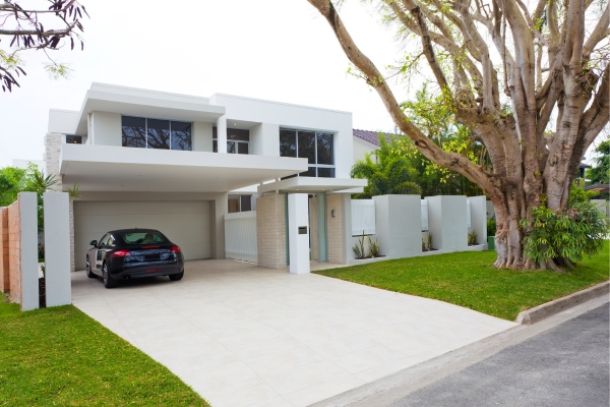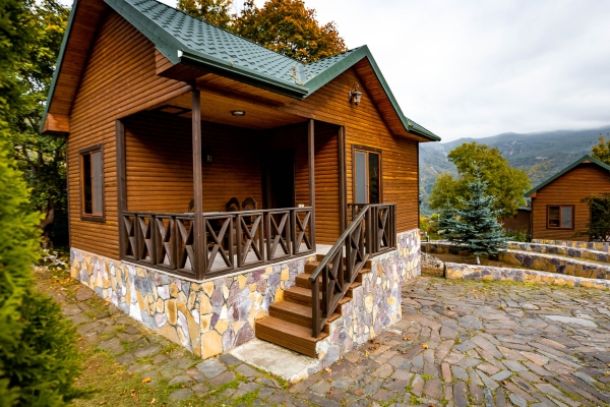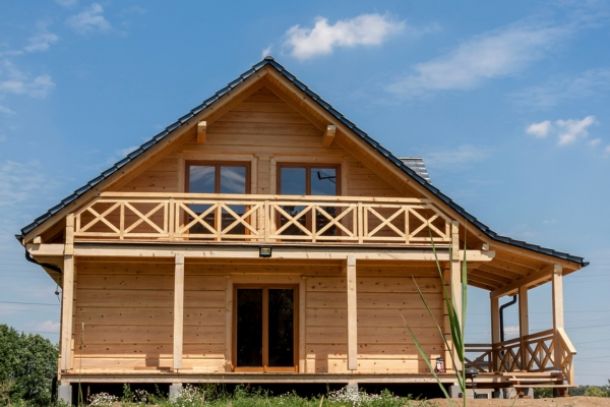Designing a durable wooden home requires a balance between aesthetics, functionality, and structural integrity. Whether you’re embarking on a DIY project or collaborating with experts, understanding the principles of durability in wooden construction is crucial. This article explores the key design elements, material choices, and construction methods that ensure your wooden home stands the test of time.
Introduction
Wooden homes have a timeless appeal and offer warmth, natural beauty, and sustainability. However, durability is not solely a matter of the wood itself—it’s about thoughtful design, careful material selection, and proper construction techniques. In this guide, we will cover the critical aspects of designing a durable wooden home, from choosing the right timber to integrating modern construction practices that enhance longevity.
Key Design Principles for Durability
- Structural Integrity:
The foundation of durability begins with a robust design. Start by working on detailed blueprints that outline load-bearing elements and support systems. Consider factors like seismic activity, local weather patterns, and soil conditions. A well-designed foundation and framing system minimizes structural movement and reduces the risk of cracks or failure over time. - Material Selection:
- Wood Species: Not all wood is created equal. Opt for species known for their durability, such as cedar, redwood, or pressure-treated pine. These types are naturally resistant to decay, pests, and moisture.
- Sustainable and Treated Wood: Consider using certified sustainable timber and ensure it is properly treated to resist environmental challenges. Treatments can include chemical preservatives or natural oil-based products that help repel moisture and insects.
- Complementary Materials: Durable construction is enhanced by integrating materials like stone or metal reinforcements in critical areas. For example, using metal brackets at joints can increase the overall strength of the structure.
- Design for Maintenance:
Incorporate design elements that facilitate easy maintenance. Roof overhangs, proper drainage systems, and accessible exterior surfaces help reduce wear. Designing with maintenance in mind means planning for regular inspections and repairs, which in turn prolongs the home’s lifespan.
Incorporating Modern Construction Techniques
- Precision in Framing:
The framing of a wooden home is pivotal. Utilizing modern tools—such as laser levels, digital measuring devices, and computer-aided design software—ensures that each piece is cut accurately and fits perfectly. This precision reduces the likelihood of structural weaknesses and improves the overall durability of the home. - Advanced Insulation and Ventilation:
Insulation is not only for energy efficiency but also for protecting the wooden structure from moisture-related issues. Use eco-friendly insulation materials like recycled cellulose or natural wool. Additionally, design a ventilation system that prevents moisture buildup within the walls, which is a common cause of rot and degradation. - Hybrid Construction Approaches:
Consider a hybrid design that marries traditional craftsmanship with modern engineering. For instance, a timber frame combined with a concrete or steel-reinforced foundation can offer enhanced stability and longevity. Such an approach can also optimize thermal performance and reduce energy costs.
Aesthetic Considerations Without Compromising Durability
A durable wooden home doesn’t have to sacrifice beauty for strength. Here are some design tips that combine aesthetics with durability:
- Natural Finishes:
Choose finishes that not only highlight the natural grain of the wood but also protect it. High-quality stains, sealants, and eco-friendly paints add a layer of defense against the elements while preserving the wood’s visual appeal. - Open Floor Plans:
Modern designs often feature open floor plans that enhance the perception of space and light. While open spaces are appealing, ensure that the design includes adequate structural supports, such as beams or load-bearing walls, to maintain integrity. - Integration with the Environment:
Design your home to complement its surroundings. Large windows, natural stone accents, and green roofing options not only create a harmonious look but also contribute to energy efficiency and sustainability.
Sustainability and Long-Term Performance
Durability goes hand in hand with sustainability. A wooden home designed for durability will also have a lower environmental impact over its lifetime. Consider these sustainable practices:
- Renewable Resources:
Using sustainably sourced wood reduces the environmental footprint. Look for certifications such as FSC (Forest Stewardship Council) to ensure ethical harvesting practices. - Energy Efficiency:
A durable design incorporates energy-efficient elements that minimize utility costs and reduce carbon emissions. Passive solar design, energy-efficient windows, and modern insulation methods are essential components. - Adaptability and Future-Proofing:
Design your home to be flexible and adaptable. Consider future modifications or expansions without compromising the structural integrity. A well-designed wooden home can evolve with your needs, thereby extending its useful life.
Practical Tips for DIY Builders
For those taking on a DIY project, here are some actionable tips to ensure your design leads to a durable wooden home:
- Plan Thoroughly:
Before breaking ground, create detailed plans and consult with professionals if necessary. Understanding the full scope of the project prevents costly mistakes later on. - Invest in Quality Tools:
High-precision tools and reliable equipment can make a significant difference in the quality of your construction. Renting or purchasing quality tools is an investment in the longevity of your build. - Regular Inspections:
Schedule routine inspections during and after construction. Early detection of issues like moisture penetration or structural stress can prevent long-term damage. - Learn and Adapt:
Engage with online DIY communities, attend workshops, and continuously educate yourself about new techniques and materials. The more knowledge you acquire, the better equipped you will be to design and maintain a durable structure.
Conclusion
Designing a durable wooden home is a multifaceted process that demands careful planning, precise execution, and ongoing maintenance. By selecting quality materials, incorporating modern construction techniques, and focusing on both aesthetics and functionality, you can create a home that not only exudes natural beauty but also stands resilient against the test of time. Whether you’re a seasoned DIY builder or a novice eager to learn, a thoughtful approach to design is the key to ensuring your wooden home remains a lasting investment for generations to come.


